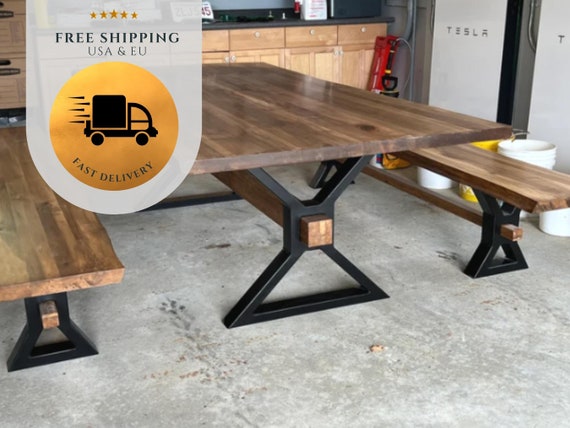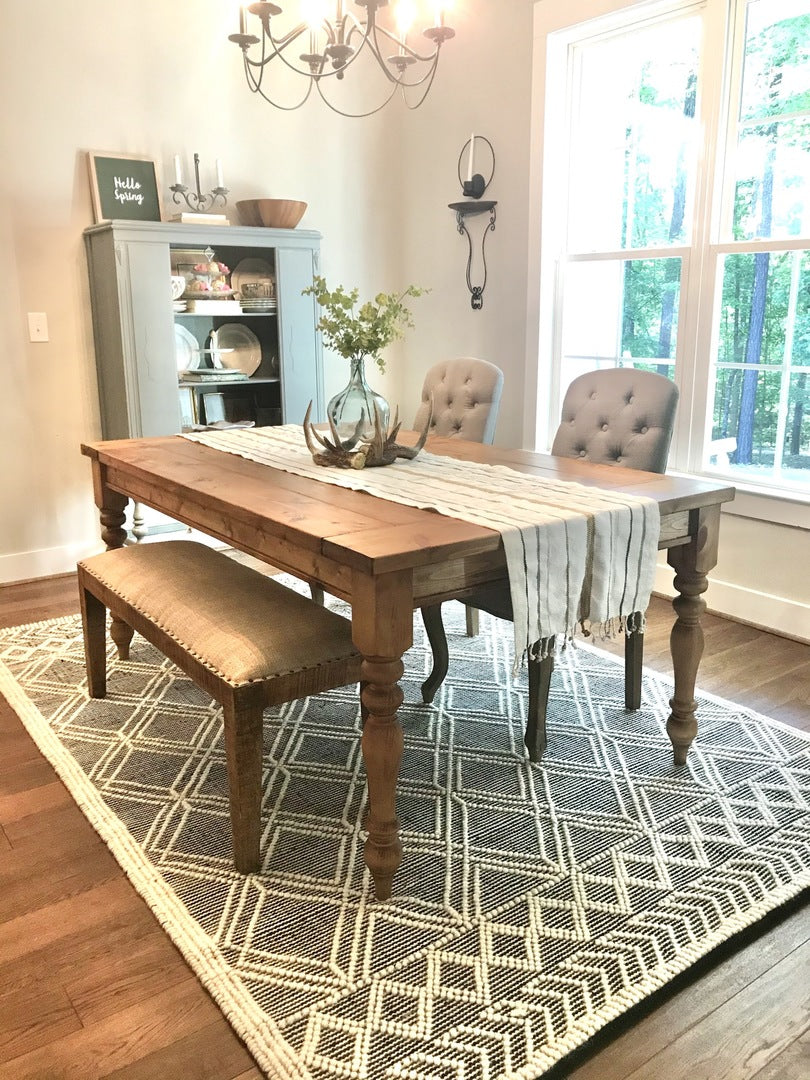Dining Room Table Legs: What to Consider Prior To You Purchase
Dining Room Table Legs: What to Consider Prior To You Purchase
Blog Article
Picking the Perfect Table: What Styles Job Best for Your Home?
Picking the ideal dining table for your home can be a nuanced procedure that stabilizes visual appeals and performance. To browse these choices efficiently and discover a table that absolutely complements your home, consider the complying with elements in information.
Assessing Your Space
Assessing the dimensions and design of your eating location is an essential initial step in choosing the best eating table. Begin by gauging the size and size of the room, accounting for doorways, windows, and other architectural features that could influence table placement. This guarantees that your table not only fits however likewise permits comfortable motion around it.
Take into consideration the variety of individuals you typically amuse. A table must suit your household's daily requirements while supplying sufficient adaptability for occasional guests. As a guideline of thumb, assign at the very least 24 inches of table width per individual to make certain a comfy eating experience.
It's likewise vital to preserve suitable clearance around the table. Ideally, there should go to the very least 36 inches between the table edge and wall surfaces or other furniture, making it possible for very easy gain access to and motion. For spaces where chairs with arms or added storage space systems like buffets are involved, raising this clearance to 48 inches is a good idea.
Illumination and atmosphere play substantial duties also. Make sure that your dining table aligns with existing illumination fixtures or prepare for sufficient lighting options. This extensive spatial assessment assurances that your dining table not just fits physically yet also integrates with your space's total performance and visual.
Popular Table Styles

Standard eating tables commonly include elaborate details, curved legs, and abundant timber surfaces, evoking a sense of timeless elegance. They are excellent for homes with timeless decoration or those seeking to add a touch of elegance to their dining location.
Modern eating tables prioritize simplicity and tidy lines, commonly integrating materials like glass and steel. These tables are excellent for modern spaces, providing a streamlined and clean look that enhances minimal design philosophies.
Rustic table, on the other hand, emphasize all-natural materials and a handmade appearance - dining room table legs. They frequently include recovered wood and a troubled surface, creating a cozy and inviting atmosphere. These tables function well in farmhouse-style homes or those looking for a comfortable, organic feel
Industrial eating tables integrate resources such as steel and wood, often showcasing a practical aesthetic. This design is well-suited for loft spaces or urban rooms, adding a touch of sturdy charm and longevity to the dining experience.
Each design provides distinctive advantages, making it important to select one that straightens with your home's general layout and your personal preferences.
Product Choices
When choosing an eating table, the choice of product plays an essential duty in determining both the table's aesthetics and functionality. Wood, go to this website steel, glass, and composite materials each offer special benefits and difficulties, making it imperative to line up the product with your home's style and lifestyle requirements.
Timber is a timeless and versatile choice, readily available in varieties other such as oak, walnut, and mahogany. Known for its toughness and heat, wood complements both standard and modern insides. It calls for regular maintenance to avoid scratches and warping.
Metal tables, commonly crafted from stainless-steel, light weight aluminum, or functioned iron, are praised for their modern appeal and robustness. They are especially fit for industrial or minimalist settings however can be susceptible to dents and may feel cold to the touch.
Glass table bring an air of beauty and openness, ideal for smaller spaces as they create an impression of even more area. While very easy to tidy, glass can be prone to smudges and needs cautious dealing with to avoid chips and cracks.
Composite materials, such as MDF and plywood, deal cost-efficient and personalized remedies, though they might lack the longevity of natural products. Choosing the best material guarantees your eating table is both a practical possession and a visual joy.
Forming and Size Considerations
After figuring out the suitable product for your dining table, the following consideration is picking the right form and size to fit your room. On the other hand, rounded tables foster a feeling of intimacy and are exceptional for smaller sized dining locations, encouraging conversation by removing corners and making everybody really feel equally consisted of.
As a rule of thumb, allocate at least 24 inches of table width per person to ensure comfortable eating. Additionally, consider the table's clearance room: there need to be at the very least 36 inches in between the table side and the wall surfaces or other furniture. Extending tables offer flexibility if you frequently organize bigger celebrations, supplying extra seating when needed without inhabiting added area daily.
Matching Your Decoration
Picking a dining table that integrates with your existing design is crucial in creating a natural and welcoming area. A streamlined, minimalist table with clean lines is excellent for a contemporary home, while a vintage, luxuriant table suits a much more typical setting.
Shade and product are equally considerable. If your style features warm tones and all-natural materials, think about a wood table to boost the organic feel. Alternatively, a glass or steel table may be better suited in a space dominated by great shades and industrial aspects. Take note of the coating, as it should mirror other furniture and fixtures to preserve consistency.
Texture plays an important function. A rough-hewn, recovered wood table can add character to a rustic space, while a refined marble surface can elevate a glamorous dining area. Think about the scale and proportion of the table in relation to the area dimension and existing furniture. A well-matched dining table not only boosts aesthetic charm however click to find out more also enriches the total eating experience.

Conclusion
Choosing the optimal table necessitates careful factor to consider of room, design, materials, shape, and dimension (dining room table legs). Standard tables complement classic interiors with abundant wood surfaces, while modern tables fit contemporary settings with glass and steel. Rustic layouts present warmth via all-natural materials, and industrial designs boost metropolitan environments with raw components. Integrating the eating table with existing decor guarantees both performance and aesthetic allure, contributing to a cohesive and aesthetically pleasing dining area.
Report this page